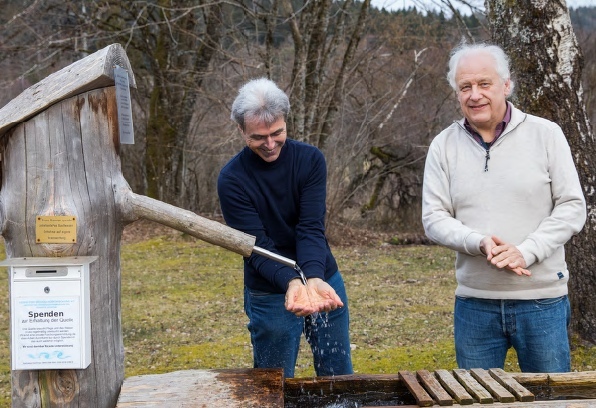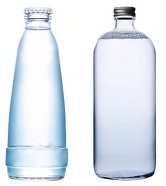Every five seconds, a drop of water falls into the Petri dish filled with water. The flowing movement caused by the water drop is visualized with the aid of glycerol and a camera projection and is easy to see. Concentrically, starting from the drop center, different patterns form in the bowl. They are remotely reminiscent of a mixture of moon craters, leaves and flowers. "With this so-called drip-image method, we can depict the flow properties of water and draw conclusions about the quality of the water," says Dr. Manfred Schleyer. The biologist and chemist is head of the Institute for Flow Sciences in Herrischried in the Waldshut district not far from the Swiss border. Researchers here have been investigating how to approach the properties of this particular substance beyond the usual methods since as early as 1961.
QUALITY INSTEAD OF QUANTITY
The institute was founded when environmental pollution with foam mountains in rivers first became particularly apparent and the need to preserve clean and life-supporting water arose. "Using standard chemical analysis methods such as gas chromatography and mass spectrometry, we measure the quantitative concentration of foreign substances that do not occur naturally in water," explains Manfred Schleyer, "but our research question also applies to methods that allow qualitative statements to be made."
In the drip-imaging process, water is stimulated to move in ways that allow conclusions to be drawn about its internal properties. Schleyer's research team and its predecessors have found that water moves differently depending on the process it has undergone.
 Depending on the purity of the water, different flow patterns form in the test.
Depending on the purity of the water, different flow patterns form in the test.
PROJECT DETAILS
A versatile fabric
the spring of the Strömungsinstitut has a recognized good quality; it is chemically and microbiologically verifiable and fully complies with the requirements of the German Drinking Water Ordinance. The citizens of Herrischried, who regularly come to the spring to fill up on water, also confirm the good taste. However, if the water is left to stand overnight, it apparently loses quality and is rated as stale and stagnant. "So there seem to be parameters that go beyond the ingredients," Schleyer says, since the water's content hasn't changed in twelve hours. "If you examine fresh spring water in the drip pattern, it flows very intensively, differentiated, with many different movements - and above all varied. Moderate water flows with less expression and with repetitions, i.e., shapes in the drip image that appear again and again. With poor water, there is only one movement that repeats. We also regularly carry out sensory tests with different waters with test persons, blind tastings, so to speak. Even inexperienced tasters can usually identify three categories: good water, moderate water and bad water. These can then often be scientifically substantiated."
 Spring water has different flow characteristics than tap water.
Spring water has different flow characteristics than tap water.
So the spring water has different flow properties the next day. This means that there are properties that researchers can evaluate that go beyond quantitative parameters. Therefore, they are always looking for methods that allow them to make a scientifically sound quality statement on a different level.
Glass instead of plastic
However, the flow properties of water change not only over time, but above all due to foreign substances. "In the case of drinking water, after all, the limits are being raised more and more because of microbial and chemical contamination. This loss of quality can be seen in the movement in the drip pattern," says Schleyer. Containers should not be ignored either. Scientists already find the plasticizers in PET bottles in the chemical analysis. A glass bottle is optimal for them for storage; but with a closure without negative chemical influences, because the seals in the screw cap are often a source of contamination that should not be underestimated.

The container also has an impact on water quality.
Making the invisible visible
the drip image? The Petri dish contains 17.5 milliliters of the water to be tested, mixed with 2.5 milliliters of glycerol. The drop that falls from the top into the dish consists of distilled water for standardization reasons and dissolves the flow movement in the dish that is slowed down by the glycerol. At the same time, the refraction of light changes, making the previously invisible visible to the human eye (with the help of so-called streak optics). In addition, the room conditions, such as humidity and temperature, are always the same. 40 drops form a series and show a development that has the greatest flow intensity in approximately the middle third of the series and is used for evaluation.
Recognized for organic mineral water
Water - a question of consciousness?
What each individual can do?
And on the subject of water as a food and beverage?